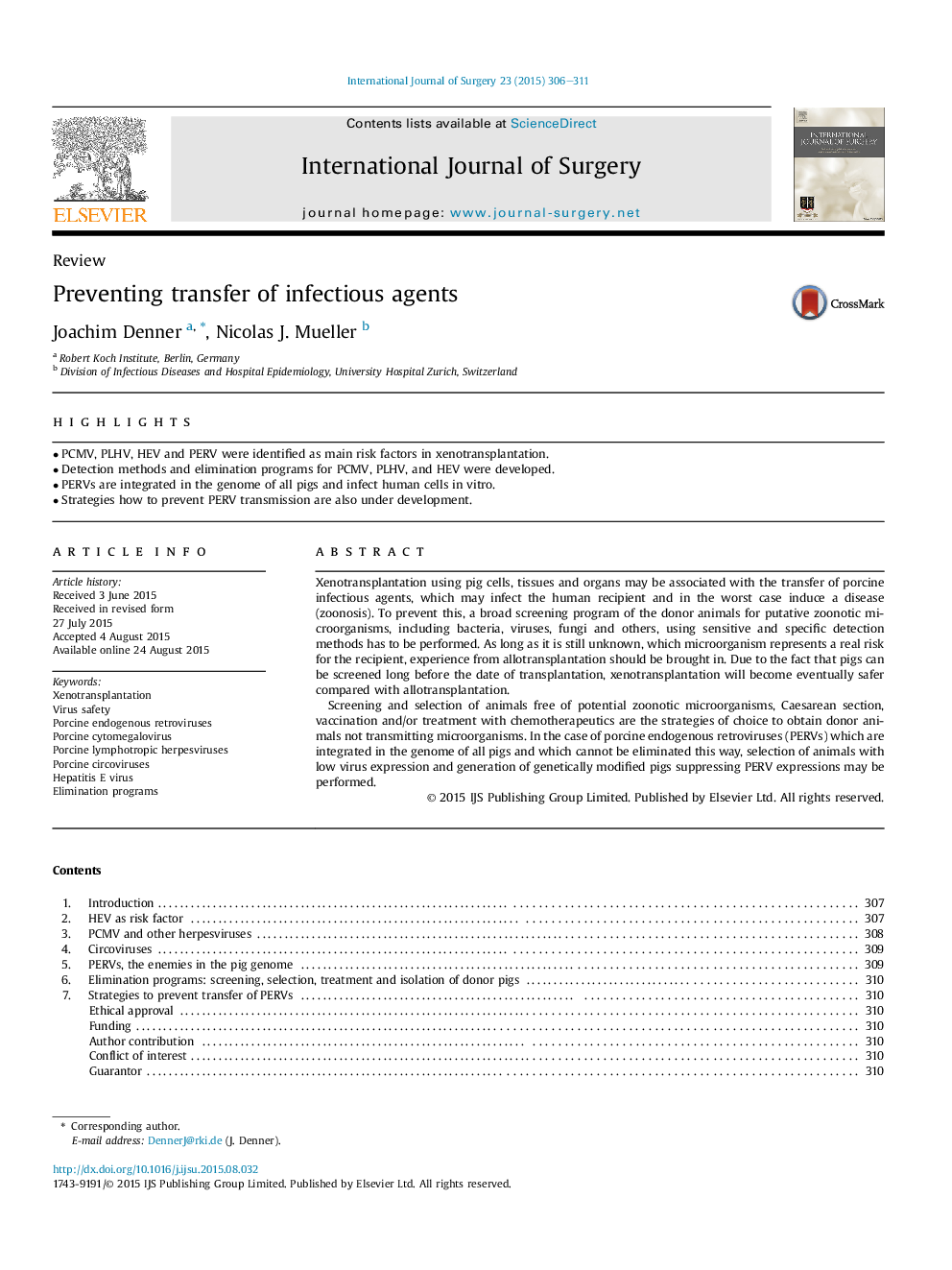| کد مقاله | کد نشریه | سال انتشار | مقاله انگلیسی | نسخه تمام متن |
|---|---|---|---|---|
| 4285731 | 1611967 | 2015 | 6 صفحه PDF | دانلود رایگان |
• PCMV, PLHV, HEV and PERV were identified as main risk factors in xenotransplantation.
• Detection methods and elimination programs for PCMV, PLHV, and HEV were developed.
• PERVs are integrated in the genome of all pigs and infect human cells in vitro.
• Strategies how to prevent PERV transmission are also under development.
Xenotransplantation using pig cells, tissues and organs may be associated with the transfer of porcine infectious agents, which may infect the human recipient and in the worst case induce a disease (zoonosis). To prevent this, a broad screening program of the donor animals for putative zoonotic microorganisms, including bacteria, viruses, fungi and others, using sensitive and specific detection methods has to be performed. As long as it is still unknown, which microorganism represents a real risk for the recipient, experience from allotransplantation should be brought in. Due to the fact that pigs can be screened long before the date of transplantation, xenotransplantation will become eventually safer compared with allotransplantation.Screening and selection of animals free of potential zoonotic microorganisms, Caesarean section, vaccination and/or treatment with chemotherapeutics are the strategies of choice to obtain donor animals not transmitting microorganisms. In the case of porcine endogenous retroviruses (PERVs) which are integrated in the genome of all pigs and which cannot be eliminated this way, selection of animals with low virus expression and generation of genetically modified pigs suppressing PERV expressions may be performed.
Journal: International Journal of Surgery - Volume 23, Part B, November 2015, Pages 306–311
